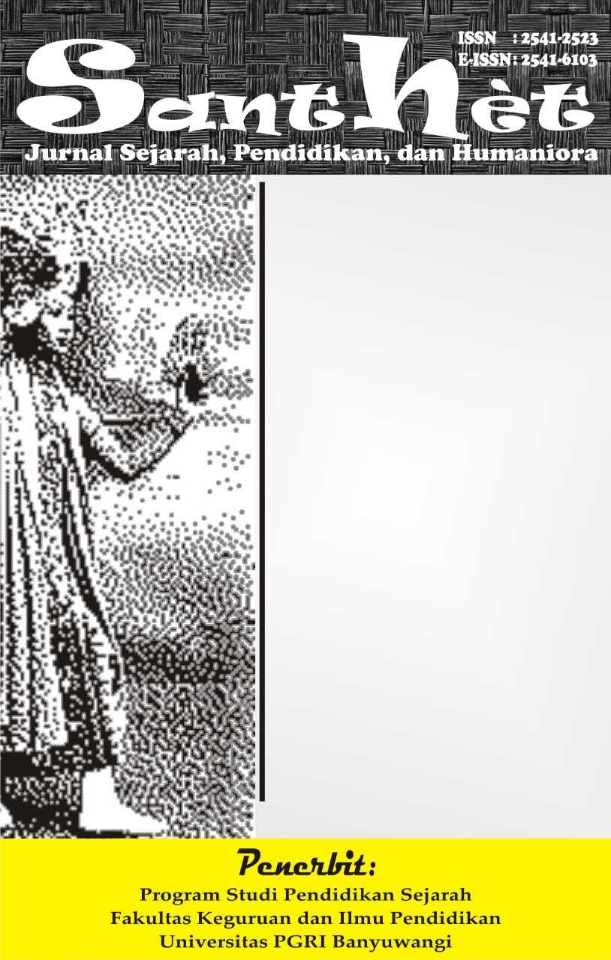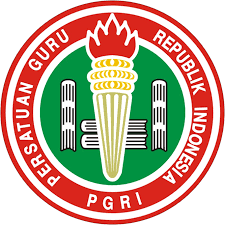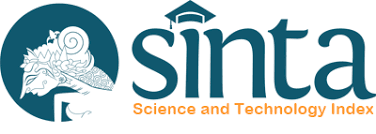WORLD HERITAGE SUSTAINABILITY: OMBILIN COAL MINING HERITAGE OF SAWAHLUNTO
KEBERLANJUTAN WARISAN DUNIA : OMBILIN COAL MINING HERITAGE OF SAWAHLUNTO
DOI:
https://doi.org/10.36526/santhet.v8i1.3993Keywords:
OCMHS, Sawahlunto, World HeritageAbstract
Ombilin Coal Mining Heritage of Sawahlunto (OCMHS) is a World Heritage originating from Indonesia, which was designated by UNESCO at its 42nd session in Baku, Azerbaijan. This World Heritage achievement has made Sawahlunto City known nationally and even internationally. OCMHS has extraordinary universal value that must be protected and preserved, because it represents multi-component technology starting from mines, mining towns, railways and ports that are well designed and integrated. This research uses historical methods, namely 1) Heuristics, namely looking for data that is relevant to the research; 2) Source Criticism, namely testing the truth and accuracy of the data obtained; 3) Interpretation, namely the stage of classifying data and facts, synthesizing facts, so that historical reconstruction can be carried out; 4) Historiography is a stage of writing like an academic work. In the course of 4 (four) years after the establishment of OCMHS, various problems emerged, starting with the resolution of 16 (sixteen) notes from the World Heritage secretariat that had not been fulfilled, a management body that had not yet been formed, the absence of adequate budget support, unclear distribution duties between the West Sumatra Provincial Government and the Central Government, regional governments run their own course in managing OCMHS assets. The management of the OCMHS World Heritage site is about joint efforts to harmonize and equalize frequencies. This is still a challenge and homework for the Central Government, Regional Government and various parties involved in it, with the aim of preserving OCMHS as a World Heritage.
References
Adrial. (2023, Oktober 24). Heritage Impact Assessment OCMHS. (Adrial, Interviewer)
Andi Asoka, Z. Z. (2005). Sawahlunto Dulu, Kini dan Esok: Menyongsong Kota Wisata Tambang yang Berbudaya. Sawahlunto: Pusat Studi Humaniora Universitas Andalas.
Aprimas. (2021). laporan panitia pelaksana kegiatan Bimbingan Teknis Juru Pelihara OCMHS. Padang: Dinas Kebudayaan Provinsi Sumatera Barat.
Aprimas. (2022, Juli 10). CB Peringkat Provinsi 2019. (R. Mairiska, Interviewer)
Aprimas. (2023, Agustus 25). Fakta Itergritas OCMHS. (R. Mairiska, Interviewer)
Arsa, D. (2018). The Fall Of Sawahlunto. Khazanah : Jurnal Sejarah dan Kebudayaan Islam, Volume VIII, Nomor 15, 50.
Budaya, B. P. (2021). Laporan Penyusunan DED (Detail Engineering Design) Revitalisasi PLTU Salak. Sawahlunto: PT. Synpra Engineering Consultant.
Fadhilah, R. (2019). Usaha-Usaha Pemerintah Kota Sawahlunto dalam Mewujudkan Predikat sebagai Kota Warisan Dunia (2003-2019). Skripsi.
Gino, R. (2020, september 21). Peringatan 1 Tahun Ombilin Coal Mining Heritage of Sawahlunto,. (R. Gino, Performer) Sawahlunto.
Gino, R. (2020). Situs Warisan Dunia, Warisan Budaya Tambang Batubara Ombilin Sawahlunto. Sawahlunto.
Gino, R. (2022, Agustus 8). Sawahlunto Tahun 2001-2009. (R. Mairiska, Interviewer)
Hendra, Y. (n.d.). Retrieved from langgam.
Hendra, Y. (n.d.). Retrieved from Langgam.
Herwandi. (2007). Sawahlunto dan Malaka : Kerjasama Kota "Kembar" dalam Bidang Pengelolaan Sumberdaya Budaya. Fakultas Sastra Universitas Andalas.
Kebudayaan, D. (2023, Agustus 11). Fakta Intergritas OCMHS. Fakta Integritas. Padang, Sumatera Barat: Dinas Kebudayaan Provinsi Sumatera Barat.
Kemendikbud. (2018). Warisan Tambang Batubara Ombilin Sawahlunto. Jakarta: Kementerian Pendidikan dan Kebudayaan Republik Indonesia.
Kemendikburistek. (2022). Rapat Kajian Zonasi KCBN Sawahlunto. Jakarta: Kemendikbudristek.
Lindayanti, A. F. (2016). Pertambangan dan Pengangkutan Batubara Ombilin Sawahlunto Pada Masa Kolonial. Padang: Kantor Peninggalan Bersejarah dan Permuseuman bekerjasama dengan Pusat Studi Humaniora (PSH) Universitas Andalas Padang dan Minangkabau Press.
Lindayanti, A. F. (2017). Kota Sawahlunto, Jalur Kereta Api, dan Pelabuhan Teluk Bayur : Tiga Serangkai dalam Sejarah Pertambangan Batubara Ombilin di Sumatera Barat. Padang: Minangkabau Press.
LPM-ITB. (2001). Sawahlunto 2020, Agenda Mewujudkan Kota Wisata Tambang Yang Berbudaya. Sawahlunto.
Mairiska, R. (2023). Laporan Pelaksanan kegiatan Penyusunan Keterawatan Atribut OCMHS. Padang: Dinas Kebudayaan.
Pariwisata, D. (2021). Strategi Pariwisa Berkelanjutan OCMHS . Padang: Dinas Pariwisata Provinsi Sumatera Barat.
Rahmat Gino Sea Games, D. Y. (2019). Cagar Budaya Kota Sawahlunto. Bandung: ITB Press.
Rahmat Gino, D. Y. (2020). Data Base Cagar Budaya Kota Sawahlunto Tahun 2020. Sawahlunto: Dinas Kebudayaan Peninggalan Bersejarah dan Permuseuman.
Sawahlunto, P. D. (2007). Sawahlunto Menuju Interaksi dengan Kebudayaan Dunia. Sawahlunto: Pemerintah Daerah Kota Sawahlunto.
Sawahlunto, P. K. (2018). Buku Panduan Warisan Budaya Tambang Batubara Ombilin Sawahlunto menuju Warisan Dunia UNESCO. Sawahlunto: Dinas Kebudayaan Peninggalan Bersejarah dan Permuseuman Kota Sawahlunto.
Sawahlunto, P. K. (2021, Desember 1). Matrik 16 Poin Catatan Rekomendasi ICOMOS.
Setiawati, S. (2023, Juni 15). CB Peringkat provinsi 2021 dan 2022. (R. Mairiska, Interviewer)
Sukry, N. (2013). Museum Goedang Rasoem Kota Sawahlunto: Dari Hunian Karyawan Tambang Batubara Ombilin menjadi Museum 1970-2013. Padang: Fakultas Ilmu Budaya Universitas Andalas.
Yolson, D. (2022, Agustus 19). Atribut Warisan Dunia OCMHS. (R. Mairiska, Interviewer)
Yunus Arbi, P. W. (2023). Kajian Dampak Cagar Budaya (KDCB) Kegiatan Pembangunan Gedung Baru IGD dan Radiologi RSUD Sawahlunto. Sawahlunto: Rumah Sakit Umum Daerah Sawahlunto.





























